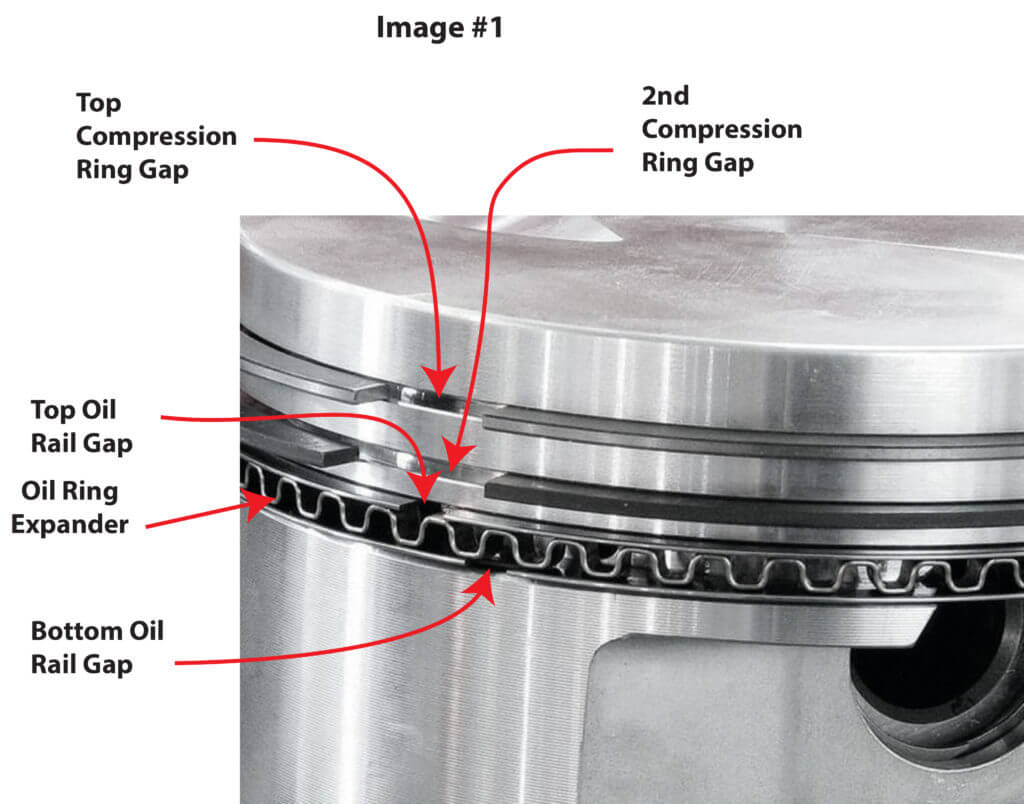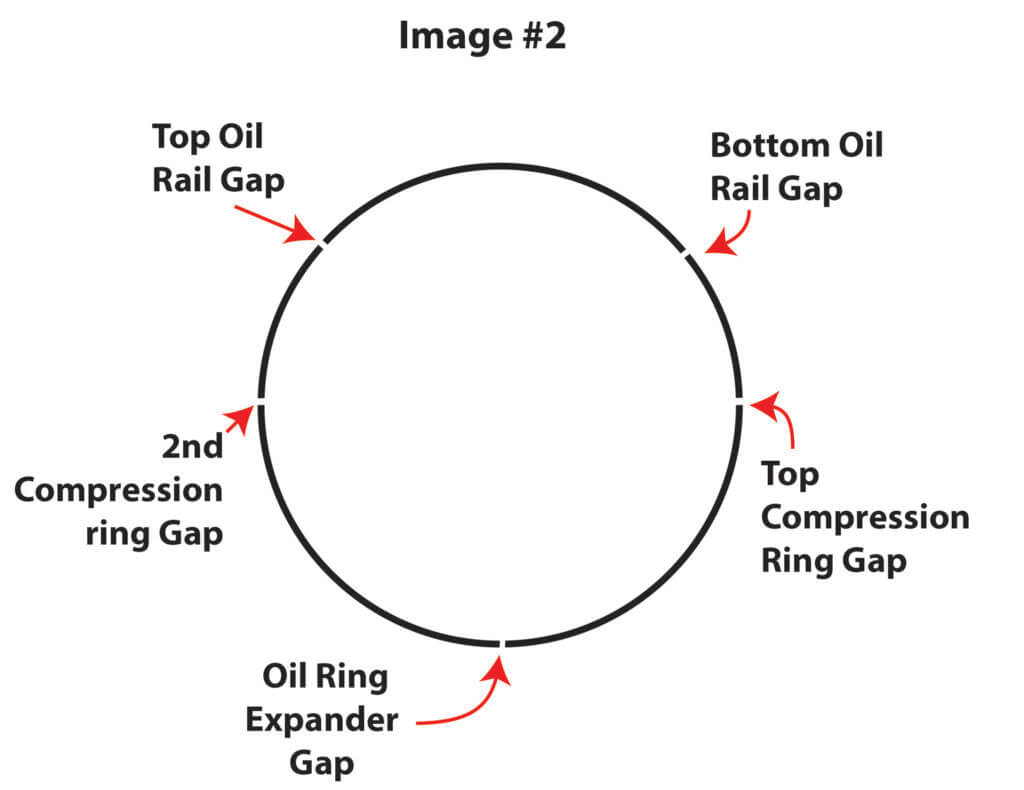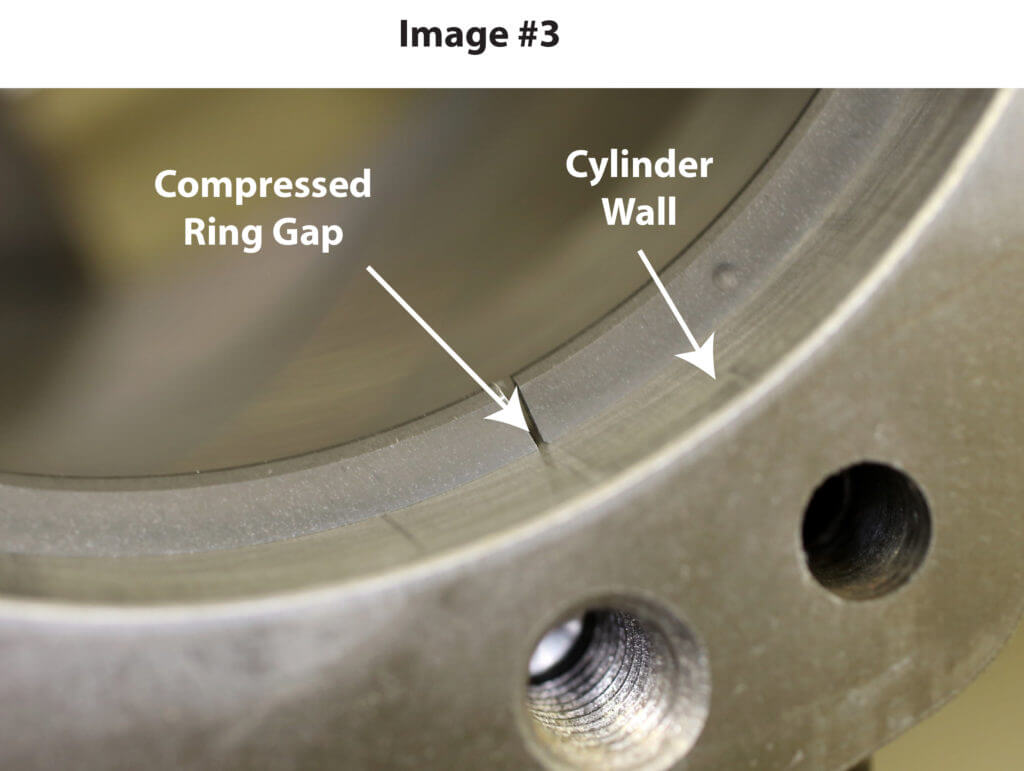2019 Rick Muscoplat Rick’s Free Auto Repair Advice
Blowby is gas that escapes past the pistons during the compression and power strokes of an internal combustion engine. The gas is a mixture of unburned fuel, exhaust and water vapor along with traces of oil. Blowby escapes past the piston rings due to wear and normal ring gap.
What is piston ring gap?
All piston rings are formed in a circle. But to install the ring on the piston, it must have an opening. This opening is referred to as the ring gap”. During installation the installer expands the ring with a ring expander tool and inserts it onto the piston. When first installed, the gap is quite large as shown in the image #1 below. However, once the piston rings are compressed and installed in the cylinder head, the ring gap closes as shown in image #2.

Piston rings installed on piston but not staggered. This image just shows how large the piston ring gap is before compression.

To prevent excessive blowby, the installer staggers the location of the ring gaps so the blowby gas encounters a maze-like path out of the cylinder. See image #3

However, no matter how small the gap or how well the gaps are staggered, blowby manages to escape past the piston ring.
Blowby gasses must be removed from the crankcase
Since the blowby is being forced into the crankcase, the gasses must be removed or the pressure will build to dangerous levels. In pre-emission times, car makers simply vented blowby gasses to the atmosphere through a vent tube. As emissions standards were implemented, car makers designed the Positive Crankcase Ventilation (PCV) system that sucked blowby out of the crankcase and fed it back into the intake manifold to be burned again or to act as ballast to cool the combustion chamber.
